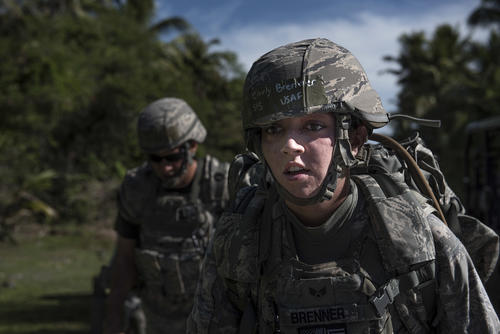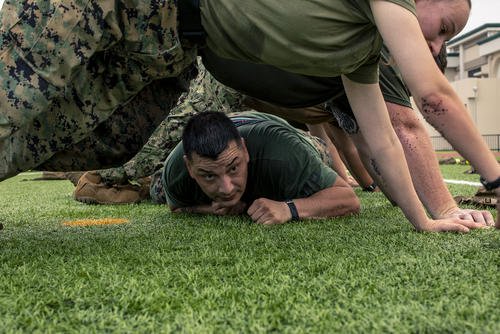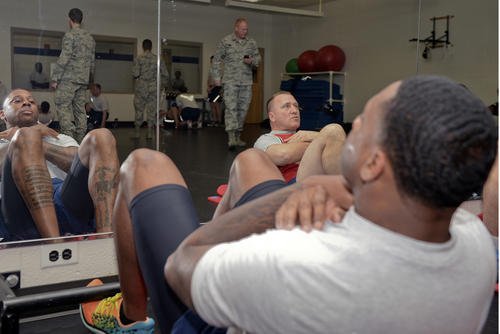Strength training for the tactical athlete is not exactly the same as what football players and powerlifters do to prepare for their sports.
While they may do some of the same exercises and repetition and set ranges, the tactical athlete will also be training for endurance, load-bearing durability and muscle stamina. Most importantly, there is no offseason for the tactical athlete. Arranging workouts to allow you to get good at everything, versus great at just lifting, is crucial for anyone considering serving in special operations.
Here is a good question from a future Army Ranger looking to become stronger before joining:
Hey, Stew,
I am preparing for the Army Rangers and need to get stronger. For compound lifts like the bench press, squats and deadlifts, what rep ranges do you use? And do you prefer barbell front squats over back squats?
Thank you,
Nick
As a former powerlifting football and rugby player, I love a good lift cycle to help build strength and mass for upcoming seasons. Many tactical athletes may require such a mass increase, depending on their athletic history and height-to-weight ratio.
Read Next: The Unintended Consequences of Skipping a Workout (and What You Can Do About It)
The classic powerlifting exercises – bench presses, squats and deadlifts – are common in many training programs, ranging from five sets of five reps each to 1-3 reps with heavier weights. I typically recommend a blend of rep ranges.
Here’s how I break it down for tactical athletes:
Strength Building
Stick with four to six sets of four to six reps each for your main lifts. This rep range helps you develop foundational strength, which is essential for load-bearing and explosive power.
You do not need to be a professional lifter, but if you can handle one to two times your body weight in these lifts, you are strong enough to handle most requirements and load-bearing activities in front of you.
Muscle Stamina and Durability
Incorporate higher rep ranges – three or four sets of 15 reps each – especially with body-weight exercises and lighter dumbbells and kettlebells. This builds muscular endurance, which is crucial for rucking, obstacle courses and selection courses.
This rep range is also suitable for muscle growth (hypertrophy) if you need to gain some mass.
Strength Conditioning Training
Don’t neglect circuit-style workouts that mix strength, calisthenics and cardio. This keeps you versatile and able to handle the unpredictable demands of tactical environments. Many of today’s fitness tests, such as the Ranger Physical Assessment Test (RPAT), assess all of the above.
Rotate these rep ranges throughout your training week. For example, start the week with heavier, lower-rep strength work and finish with higher-rep stamina sessions. This approach prevents plateaus and keeps you ready for anything.
The above method works well if you are looking for moderate improvements and maintenance. However, if you really need to build strength or increase muscle mass, you should consider a more conventional strength training cycle.
This all depends on your training timeline. If you have a year or more, you can consider a seasonal periodization approach, like many of our former athletes who are preparing for various tactical professions utilize. This will allow you to focus specifically on your weaknesses and help you maintain your strengths.
See more training ideas in the Military.com Fitness Section. There are hundreds of articles on training for any military course, fitness testing, gaining weight, losing weight and building longevity during and after your service.
Want to Learn More About Military Life?
Whether you're thinking of joining the military, looking for fitness and basic training tips, or keeping up with military life and benefits, Military.com has you covered. Subscribe to Military.com to have military news, updates and resources delivered directly to your inbox.




















